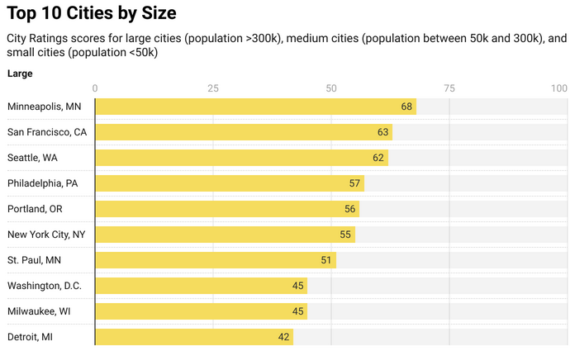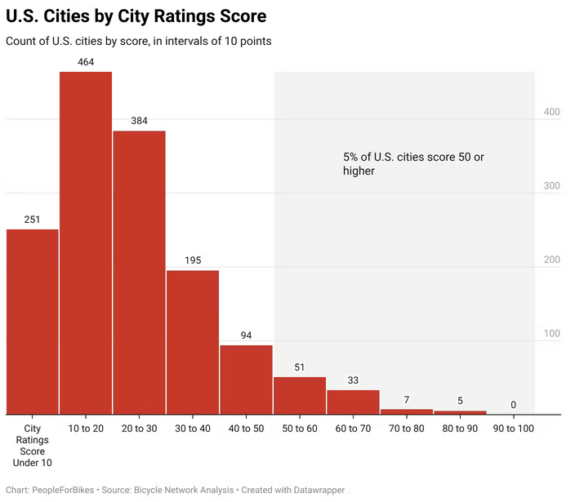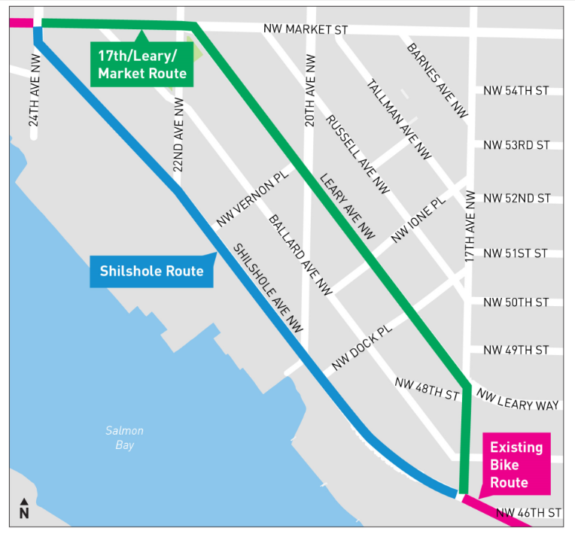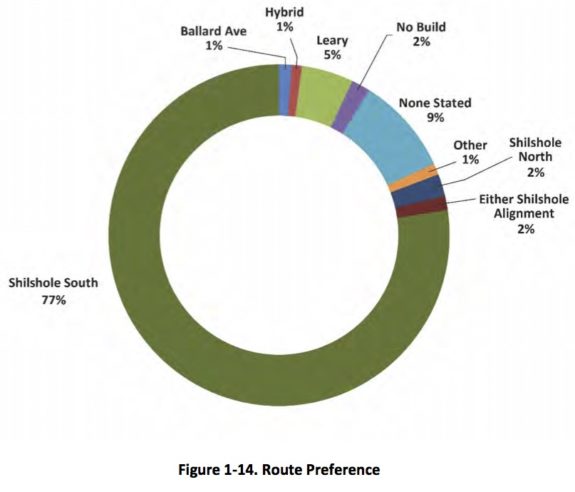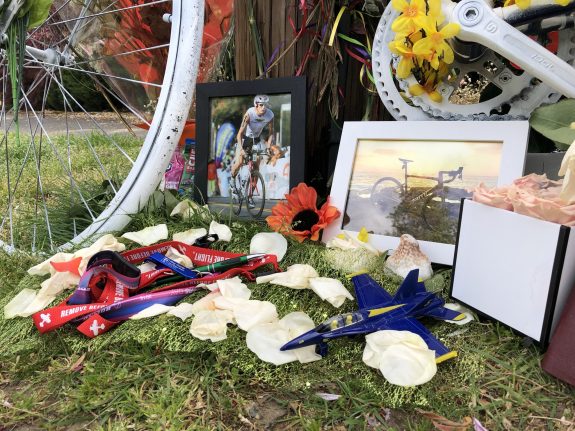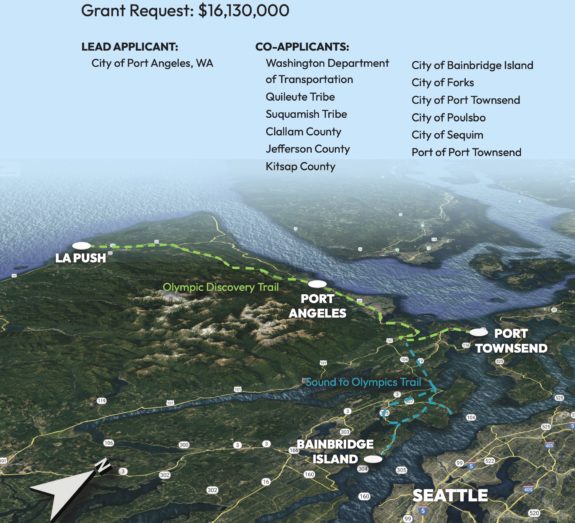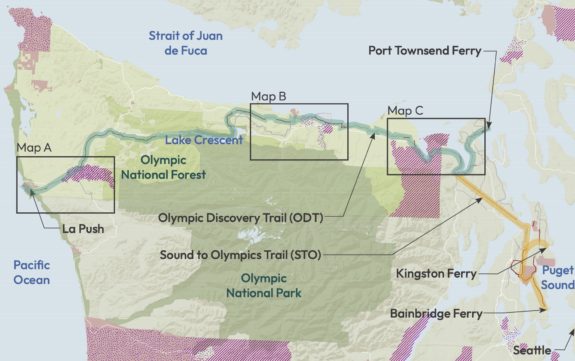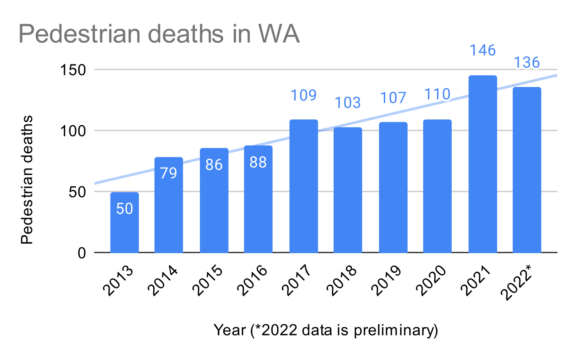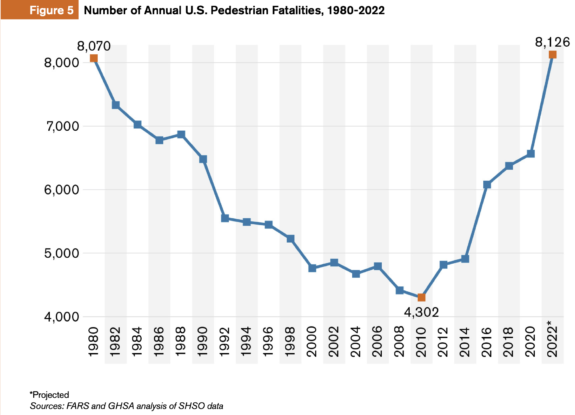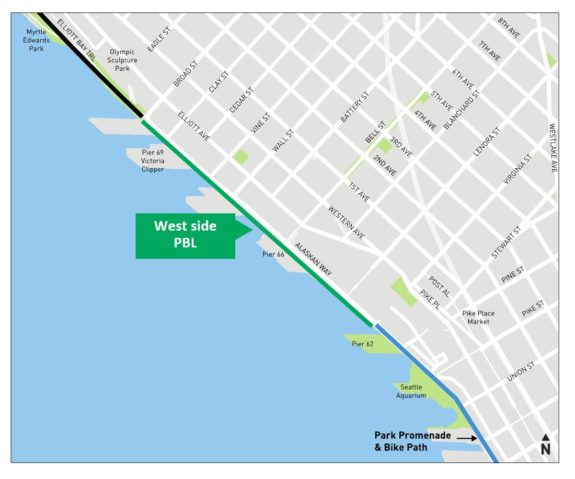
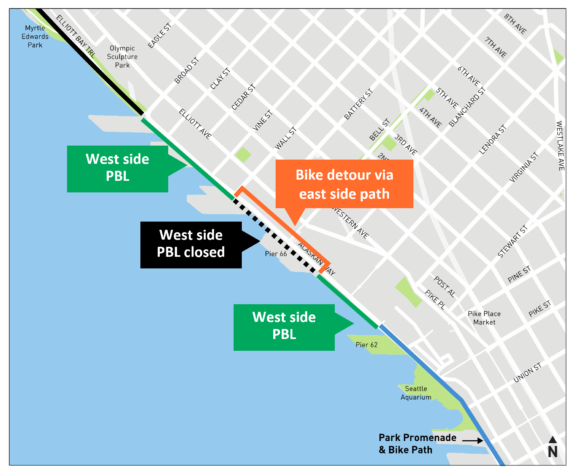
The city plans to build a continuous bike lane on the waterfront side of Alaskan Way under the latest design, SDOT announced Monday. Rather than permanently detour the bike route across Alaskan Way twice within a couple blocks, the new design includes a detour plan for use only during busy cruise ship loading times in the area around Pier 66. This compromise solution came together after significant discussions between the Port of Seattle, Cascade Bicycle Club and the city. A recent push by Seattle Neighborhood Greenways also got more members of the public involved, sending letters of bike lane support directly to Port Commissioners.
Cascade celebrated the news, writing in an email to supporters that “more than 700 of you joined us to ask planners to ‘go back to the drawing board.’ They did just that.”
“The new design creates a continuous, protected bike lane that will be open the majority of the year,” Cascade continued. “There will be a short detour only during cruise hours so that we can bike around the chaotic crowds (and their luggage). When it’s complete, families, visitors, commuters, and others can ride safely and comfortably along the waterfront without zig-zagging across the street and back for most of the year.” Cascade is encouraging people to use their handy online form to send a thank you note to the city’s transportation officials and leaders that also encourages sturdy bollards to protect the bike lane and intuitive signage and signalling when the detour is in place.
During cruise operations, the detour would cross at Blanchard and Wall Streets, which already have traffic signals. The path would then follow a path that is partially built already, though it appears the city will need to remove more of the old George Benson Streetcar tracks to create space for the path. Below are diagrams of the two intersections from SDOT:
(more…)
